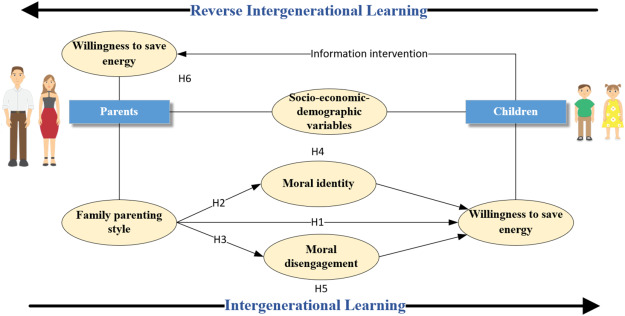
Introduction: The Shift in Learning Dynamics
In a world where change moves at digital speed, knowledge is no longer a one-way street from the old to the young. Enter reverse mentoring—a refreshing, forward-thinking concept that flips the traditional mentorship model. At its core, reverse mentoring enables younger professionals to guide older generations in areas like technology, culture, and new-world agility.
At Remin.site, where we believe memories, ideas, and wisdom transcend time, the principle of passing on knowledge—whether from young to old or vice versa—is not only valuable but vital. Death is not the end; it’s the beginning. And so is learning.
“Mentorship is no longer about age—it’s about perspective.”
What Is Reverse Mentoring?
Reverse mentoring is when a junior employee takes on the role of mentor to a senior colleague. It’s not about hierarchy—it’s about expertise. As younger generations (especially Gen Z and Millennials) enter the workforce with fluency in digital tools and cultural shifts, they’re uniquely positioned to help senior leaders navigate the evolving landscape.
Historical Roots vs Modern Interpretation
The concept was popularized by GE’s former CEO Jack Welch in the 1990s, who paired top executives with younger employees to teach them about the internet. Today, the scope has expanded beyond technology to include insights on:
- Social media fluency
- Digital transformation and tools
- Diversity and inclusion awareness
- New generational values and mindsets
Differences from Traditional Mentorship
While traditional mentorship often follows a top-down model—older, experienced professionals guiding the young—reverse mentoring embraces a two-way relationship. Each participant brings something vital to the table:
- Younger mentors contribute fresh insights, tech-savviness, and current cultural awareness.
- Older mentees offer institutional knowledge, leadership experience, and strategic thinking.
This creates not just mentorship, but mutual growth.
Why Reverse Mentoring Matters Today
The modern workplace is evolving rapidly. Organizations that fail to adapt risk becoming irrelevant. Reverse mentoring offers a powerful, practical solution to bridge the gap between generations and skillsets.
The Digital Competency Gap
Digital natives—those born into a world with smartphones, cloud computing, and social media—naturally navigate platforms that older generations often struggle to adopt. Tools like Slack, Notion, AI platforms, and digital storytelling apps can seem foreign to senior leaders without exposure.
Younger employees can help older ones:
- Streamline workflows using modern productivity tools
- Understand the role of social media in brand visibility
- Leverage data analytics and dashboards effectively
Diversity, Equity, and Inclusion Benefits
According to a Harvard Business Review article, reverse mentoring fosters empathy and connection across age groups, helping dismantle stereotypes and promote inclusion.
Younger employees often lead discussions around:
- Gender and racial equity in the workplace
- Pronoun use and inclusive communication
- Work-life integration and mental health openness
Empathy and Human-Centered Leadership
When senior leaders open themselves to learning from the young, it sends a powerful message: leadership is about listening. This helps shape a culture where feedback is welcomed and trust flows in both directions.
Reverse mentoring, then, becomes a human bridge—a way to unify values, boost engagement, and inspire innovation.
What Young People Teach Older Generations

Navigating Digital Tools & Platforms
From Google Workspace to AI writing assistants, younger employees often teach their senior peers how to navigate platforms that define today’s productivity landscape. These digital-first skills not only improve efficiency but also help older employees stay relevant in hybrid work models.
Understanding Gen Z/Millennial Consumer Behavior
Marketing, recruitment, and customer service today are shaped by younger generations’ expectations. Their emphasis on authenticity, personalization, and brand purpose is a goldmine of insight for older executives crafting strategies.
As highlighted in a Forbes article, Gen Z expects brands to speak up on social issues and operate with transparency—lessons that are best learned from within.
Embracing Agility and New Work Norms
Gone are the days of rigid schedules and siloed departments. Younger professionals bring flexibility and openness to change. They promote:
- Remote-first mindsets
- Project-based collaboration over traditional hierarchy
- Emphasis on purpose and sustainability
This shift can be difficult for older generations who’ve grown within command-and-control environments. But with reverse mentoring, adaptation becomes easier—and even exciting.
Case Studies & Real-World Applications

Example: GE’s Reverse Mentoring Initiative
Back in the early 2000s, GE pioneered one of the first high-profile reverse mentoring programs, where younger employees helped top executives grasp the potential of the internet. This helped shift the company’s digital direction and is now cited as a model for innovation-focused mentorship.
Case Study: Cross-Generational Innovation at PwC
At PwC, reverse mentoring is not just encouraged—it’s embedded in their talent strategy. Senior leaders are paired with Gen Z employees to exchange views on tech, values, and client expectations. The result? Enhanced internal culture and better understanding of emerging markets.
Organizations across the globe are now leveraging reverse mentoring to stay agile, human-centered, and ready for tomorrow.
How Organizations Can Implement Reverse Mentoring
Creating a successful reverse mentoring program requires intention, structure, and cultural readiness. It’s not just about pairing people—it’s about fostering trust, shared purpose, and open-mindedness across generations.
Selecting and Pairing Mentors and Mentees
The most effective pairings happen when both parties are committed to learning and growing. Organizations should consider:
- Matching based on complementary skills – for example, a senior leader unfamiliar with AI could be paired with a Gen Z data analyst.
- Considering diversity – not just age, but background, gender, and experiences for richer exchanges.
- Ensuring voluntary participation – mentorship thrives in a space of mutual willingness, not obligation.
Setting Expectations & Program Structure
While reverse mentoring should be flexible, a basic framework ensures accountability and progress. Consider including:
- Initial orientation and goal-setting
- Monthly or bi-weekly check-ins
- Shared learning objectives
- Feedback loops for continuous improvement
Resources like CIPD’s guide to mentoring programmes offer templates and tips to get started.
Tracking Outcomes and Measuring Impact
To ensure long-term impact, organizations should track outcomes such as:
- Increased digital adoption rates among senior staff
- Improved employee engagement and retention
- Cross-generational collaboration on innovation initiatives
At Remin.site, we understand that growth is not just vertical but cyclical. Wisdom doesn’t always come from age—it comes from connection, and connection comes from listening.
Addressing Common Challenges and Resistance
While powerful, reverse mentoring isn’t without its challenges. It’s natural to face initial discomfort or skepticism, especially when long-standing power dynamics are questioned.
Navigating Ego and Hierarchy Barriers
For many senior leaders, being mentored by a junior employee might feel awkward. But here lies the transformation: the humility to learn is the very foundation of leadership today.
“It’s not about giving up authority—it’s about gaining perspective.”
Encouraging open conversations about roles and expectations early on can help both parties embrace their journey.
Generational Communication Styles
Gen Z may prefer text or Slack, while older professionals might lean on emails or in-person chats. Bridging communication gaps means:
- Establishing preferred methods of contact
- Being flexible and patient with differences
- Focusing on what’s said—not just how it’s delivered
The Future of Reverse Mentoring in a Hybrid World

As remote and hybrid work models become the norm, reverse mentoring offers a unique opportunity to deepen engagement and reduce generational silos—even across screens.
Integrating Technology into Mentorship Frameworks
Digital tools like Zoom, Slack, Miro, and Google Meet can enhance remote mentoring if used intentionally. Consider:
- Setting up shared virtual whiteboards for collaboration
- Creating a private channel for each pair
- Using tools like Trello or Notion to track progress
Fostering a Two-Way Learning Culture
Ultimately, reverse mentoring is about more than knowledge transfer. It’s about creating a culture where everyone, regardless of age or title, is both a teacher and a student. This ethos is what will power the organizations of tomorrow.
At Remin.site, we believe that preserving knowledge across generations ensures that nothing is lost—only evolved.
Conclusion: Learning Has No Age Limit
Reverse mentoring is more than a workplace trend. It’s a bridge between generations. It’s a call for empathy, adaptability, and mutual respect in a world that refuses to stand still. When younger generations guide their elders—not to replace them, but to uplift them—we all rise together.
And isn’t that what legacy is truly about? Learning from one another, leaving behind not just memories, but movements. At Remin.site, we invite you to explore this principle—where your ideas, wisdom, and stories are not forgotten, but passed forward with intention.
Because death is not the end. It is the beginning. And so is learning—no matter where you stand in time.
Frequently Asked Questions (FAQs)
1. What is the goal of reverse mentoring?
The primary goal is to facilitate cross-generational learning, where younger employees share their expertise in digital tools, cultural shifts, and modern practices with senior staff, fostering mutual growth.
2. Is reverse mentoring only for tech skills?
No. While often associated with digital skills, reverse mentoring also covers leadership styles, inclusive practices, generational values, and innovation thinking.
3. How can a company start a reverse mentoring program?
Start by identifying clear objectives, matching participants thoughtfully, offering training and support, and tracking the outcomes for continuous improvement. Refer to resources like Harvard Business Review’s guide for deeper insights.
4. Is reverse mentoring effective in hybrid or remote settings?
Yes. With the right digital tools and a commitment to connection, reverse mentoring can thrive across remote environments. Regular check-ins and clear expectations are key.
5. What makes reverse mentoring different from coaching?
Coaching typically involves a more formal, often external relationship focused on performance. Reverse mentoring, on the other hand, is peer-based, informal, and designed to promote cultural and knowledge exchange within an organization.
